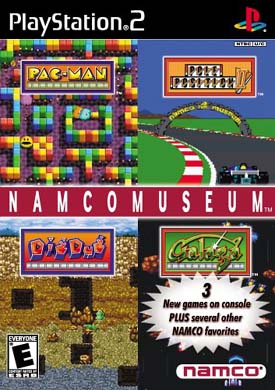

A version for the Japanese Wii Virtual Console was released in 2009. It is part of Namco Museum Virtual Arcade, and was added to the Xbox One's backward compatibility lineup in 2016. The game was released online on Xbox Live Arcade in 2006, supporting online leaderboards and achievements. 3 (1998), Namco Museum 64 (1999), Namco Museum 50th Anniversary (2005), Namco Museum Remix (2007), Namco Museum Essentials (2009), and Namco Museum Switch (2017). ĭig Dug is a mainstay in Namco video game compilations, including Namco Museum Vol. The Famicom version was re-released in Japan for the Game Boy Advance in 2004 as part of the Famicom Mini series. A Japanese Sharp X68000 version was developed by Dempa and released in 1995, bundled with Dig Dug II. 2, which also includes Galaxian, The Tower of Druaga, and Famista 4. Namco released a Game Boy conversion in North America only in 1992, with an all-new game called "New Dig Dug" where the player must collect keys to open an exit door this version was later included in the 1996 Japan-only compilation Namco Gallery Vol. Gakken produced a handheld LCD tabletop game in 1983, which replaced Dig Dug's air pump with a flamethrower to accommodate hardware limitations. In Japan, it was ported to the Casio PV-1000 in 1983, the MSX in 1984, and the Famicom in 1985. The first home conversion of Dig Dug was released for the Atari 2600 in 1983, developed and published by Atari, which was followed by versions for the Atari 5200, Atari 8-bit family, Commodore 64, and Apple II. Namco released it in Europe on April 19, 1982.

It was released in North America in April 1982 by Atari, as part of the licensing deal with Namco. Release ĭig Dug was released in Japan on February 20, 1982. Namco's marketing materials heavily call it a "strategic digging game". The team hoped to allow player-designed mazes which could prompt unique gameplay mechanics, contrasting with the pre-set maze exploration in Pac-Man (1980). Dotman" Ono, a Namco graphic artist, designed the sprites. Tasked with making Dig Dug's movement sound, she couldn't make a realistic stepping sound, so she instead made a short melody. Yuriko Keino composed the soundtrack, as her first video game project. Other staff members were primarily colleagues of Shigeru Yokoyama. The game was programmed for the Namco Galaga arcade system board by Shigeichi Ishimura, a Namco hardware engineer, and the late Shouichi Fukatani, along with Toshio Sakai. In 1981, Dig Dug was planned and designed by Masahisa Ikegami, with help from Shigeru Yokoyama, the creator of Galaga. Later stages vary in dirt color, while increasing the number and speed of enemies. Enemies eventually become faster and more aggressive and the last one then attempts escape. Įnemies chase Dig Dug through dirt in the form of ghostly eyes, only becoming solid in the air where his pump can stun or destroy them. Once all the enemies have been defeated, Dig Dug progresses to the next stage. Bonus points are awarded for squashing multiple enemies with a single rock, and dropping two rocks in a stage yields a bonus item, which can be eaten for points. Dig Dug can use an air pump to inflate them to bursting, or crush them under large falling rocks. The player controls protagonist Dig Dug (Taizo Hori) to eliminate each screen's enemies: Pookas, red creatures with comically large goggles, and Fygars, fire-breathing green dragons. It is in many Namco video game compilations for many systems.ĭig Dug is a maze video game.
#Dig dug arrangement cheats series#
It prompted a long series of sequels and spin-offs, including the Mr. During the golden age of arcade video games, it was globally successful, including as the second highest-grossing arcade game of 1982 in Japan. Upon release, Dig Dug was well received by critics for its addictive gameplay, cute characters, and strategy. Namco heavily marketed it as a "strategic digging game".

Music was composed by Yuriko Keino, including the character movement jingle at executives' request, as her first Namco game. It was programmed for the Namco Galaga arcade board by Shouichi Fukatani, who worked on many of Namco's earlier arcade games, along with Toshio Sakai. The player controls Dig Dug to defeat all enemies per stage, by either inflating them to bursting or crushing them underneath rocks.ĭig Dug was planned and designed by Masahisa Ikegami, with help from Galaga creator Shigeru Yokoyama. Dig Dug is a maze arcade game developed by Namco in 1981 and released in 1982, distributed in North America by Atari, Inc.


 0 kommentar(er)
0 kommentar(er)
